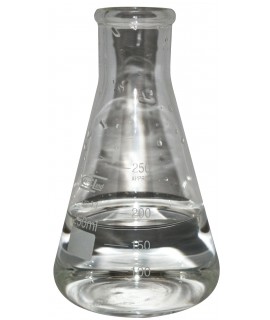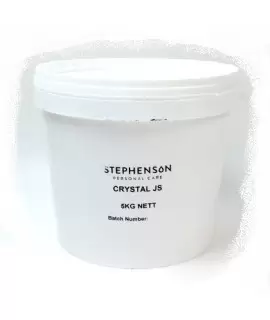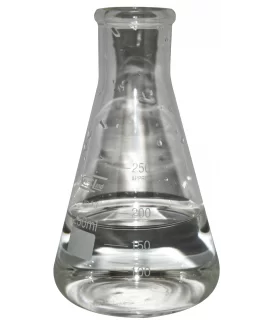PROPYLENE GLYCOL 99,5% (tech grade), L
5.52 €
6.50 €
Save 15% CHEM055
propylene glycol, CAS 57-55-6, α-propylene glycol, INCI propylene glycol, 1,2-propandiol, 1,2-dihydroxypropane, methyl ethyl glycol, methylethylene glycol
Parameter | Attribute |
Propylene glycol | Propylene glycol, α-Propylene glycol, 1,2-Propanediol, 1,2-Dihydroxypropane, Methyl ethyl glycol, Methylethylene glycol |
Formula | C3H8O2 |
Structure | 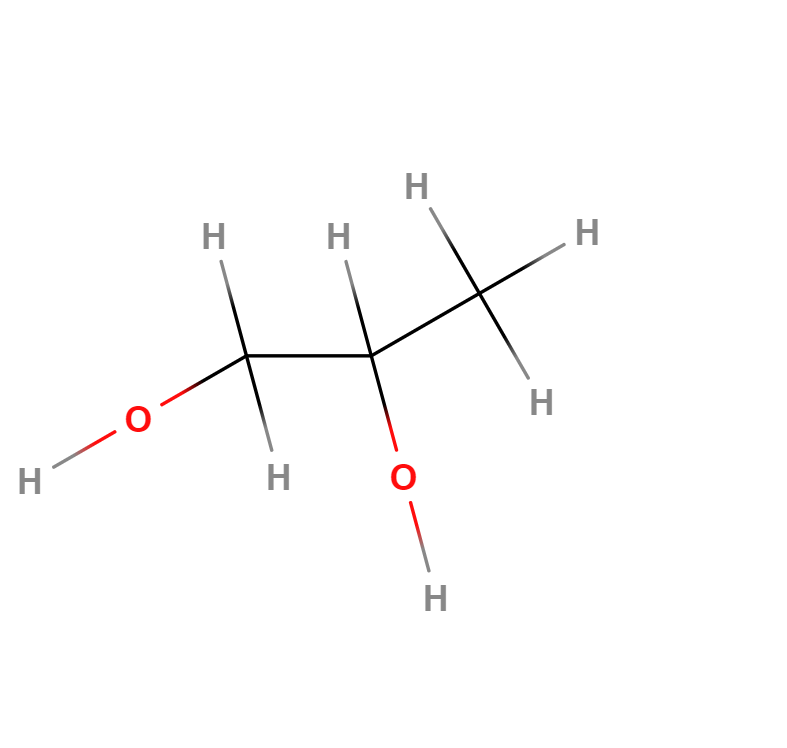 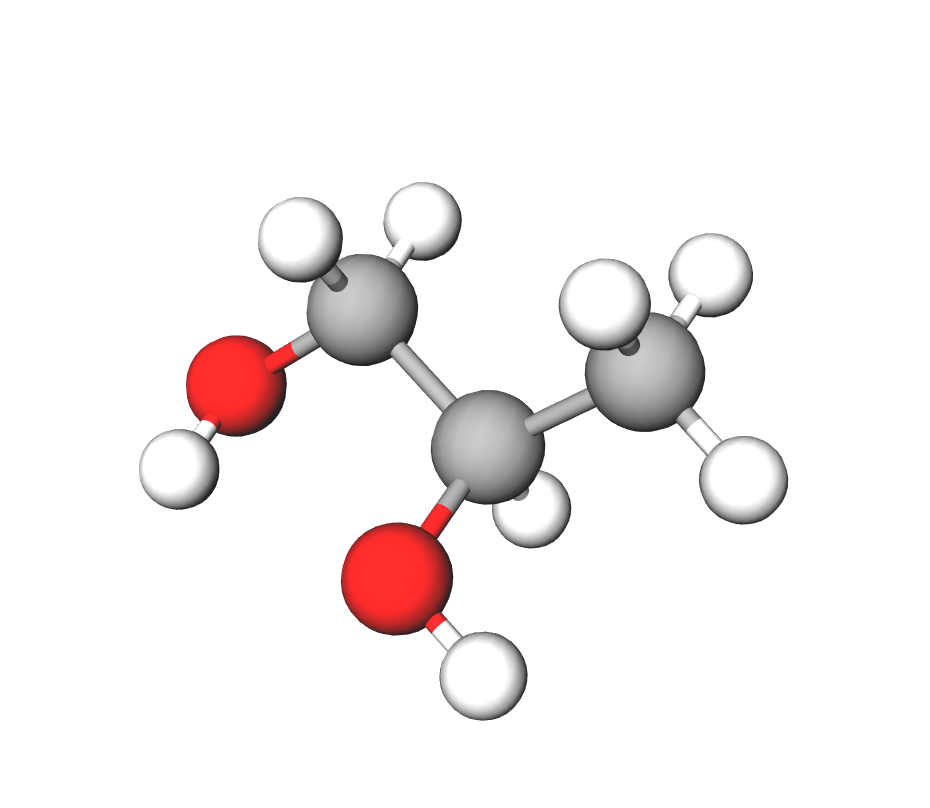 |
IUPAC | Propan 1,2 diolis (propane 1,2 diol) |
INCI | PROPYLENE GLYCOL |
CAS | 57-55-6 |
Molar mass | 76.095 g/mol |
Density | 1,04 g/cm3 |
Solubility | Miscible |
Propylene glycol is a clear, colorless, thick, slightly volatile, odorless, neutral and hygroscopic liquid. The product is miscible with water and lower alcohols, esters and ketones in any proportion.
In heating systems, propylene glycol is an odorless, colorless, transparent, low volatile, thick, neutral, non-hazardous to humans and the environment, and hygroscopic liquid. The product is miscible with water and lower alcohols, ketones and esters in any proportion. Only distilled or brackish water may be used for dilution. The use of propylene glycol as a heat transfer fluid in heating/cooling systems makes it possible to protect settlements, people and animals from the consequences of disasters such as earthquakes, fires, accidents or breaches of regulations in the operation of the heating system. The ability to reduce the freezing point of the solution and the low corrosive aggressiveness of propylene glycol prolong the service life of the heating system. The installation of closed heating systems in complexes such as hotels, boarding houses and holiday homes in the countryside requires the use of a highly reliable, environmentally clean heat transfer fluid that can withstand high energy overloads and has the following high characteristics: heat capacity, thermal conductivity, anti-corrosion, durability, resistance to crystallization and good lubricity. These are the characteristics of propylene glycol aqueous solution-based heat transfer fluids.
Propylene glycol is environmentally friendly and safe in the event of accidental ingress into the plumbing system. The liquid is highly concentrated and can be diluted with water to the desired freezing point. Concentrated propylene glycol has a freezing point of -64°C
Different ways of producing heat transfer fluids are available. We can mix by volume. This is handy when we do not have scales but have containers with clear volumes.
Coolant % by volume | Density at 20 0C, g/cm³ | Freezing temperature 0C |
25 | 1,023 | -10 |
30 | 1,029 | -13 |
35 | 1,033 | -17 |
40 | 1,037 | -21 |
45 | 1,042 | -26 |
50 | 1,045 | -32 |
Preparation of the heat carriers by mass gives similar results to those obtained by volume. The deviations are due to the fact that propylene glycol is slightly heavier than water (1L of propylene glycol weighs ~1.04kg).
- 1 kg of concentrate diluted in 1 liter of water - freezing point -34°C
- 1 kg of concentrate diluted in 2 liters of water - freezing point -14°C
- 1 kg of concentrate diluted in 4 liters of water - freezing point -8°C
- 1 kg of concentrate diluted in 9 liters of water - freezing point -3°C

For those seeking high precision in the preparation of heat transfer media, this type of graphs is helpful for the preparation of highly accurate mixtures. Note that such graphs usually give the data for the preparation of mixtures in terms of mass fractions or mass %.
On dairy farms, subclinical (stealth) ketosis can occur at the most inopportune times and has a direct impact on insemination (more than 3 inseminations), leading to premature culling of fresh cows due to moulting, endometritis and lower productivity. Indirectly, secret ketosis affects mastitis and lameness.
Ketosis is a condition rather than a disease of modern productive cows. During the first few months after calving, productive cows (producing 30 liters of milk or more per day) consume less nutrients than they excrete in milk. During this period, cows become leaner as fat and muscle are used as reserve materials for milk synthesis. The muscle tissue in the cow's liver produces a variety of substances necessary for milk synthesis. The cows shall be fed in a balanced way to maximise their muscularity at calving. When energy is scarce, fat flows to the liver, but the cow's liver has a limited capacity to convert fat into glucose, so it is broken down into ketone bodies, which are passed into the blood, milk, urine etc. The fatter the cow calves, the greater the risk that too much fat will flow to the liver, which will fatten up quite quickly. The complicating factor is that the large rumen of fat cows at calving is much smaller than that of a normally fat or lean cow, so they are physically unable to eat much feed. This is because the animal does not need capacious digestive organs when it receives too much energy from feed. In the first few days after calving, the cow eats very poorly, and after a few weeks, the bones and skin of a nice plump cow are gone, and the vet has to be called in regularly, but it is not always possible to cure the animal. If a cow manages to survive for a few months, it often develops mastitis (a damaged liver leads to a severely weakened immune system, which makes the udder very vulnerable), and has a poor breeding season. Failure to inseminate the cow within 180-300 days after calving results in prolonged lactation and eventually in lactation again. Time is wasted, vet visits are costly and the cow still often has to be bred. And the culprit is usually the farmer himself. The problem is much worse on farms where cows are fed starch-rich feeds such as maize, concentrates and potatoes. On small farms, it is usually the cows that die and have difficulty breeding. In addition, the stress experienced (crowded animals, inadequate bedding) at the end of the gestation period and at the beginning of the lactation period is just as detrimental to the cow as a poor diet.
Propylene glycol is commonly used to prevent ketosis and to maintain cow energy. This substance is converted into propionate in the rumen, which is readily converted into glucose in the liver. Liquid propylene glycol is most effective. It is best to start prophylactic feeding to fat cows before calving (about 5 days). It is also suitable for the treatment of mild forms of ketosis and as an adjunct for more severe disease. Propylene glycol should be given for three days at 250-500 ml for the treatment and prevention of ketosis. Obese cows need to be fed this preparation for several weeks but may not recover.
It is very common for cows to be reluctant to eat propylene glycol feed and have to be force-fed. This problem is more pronounced on larger and more automated/robotic farms. To improve the feedability of propylene glycol, it is usually mixed with glycerin (glycerol), as the latter is sweeter and has a more delicious smell. The mixing ratio is 50/50. Glycerol is also easily converted to glucose. To further improve the edibility, additional sugar-containing substances are added, i.e. simple sugar, sugar substitutes, caramel, glucose, molasses, etc. may be used. Ready-to-use products have a significantly higher cost than self-prepared products and do not guarantee better digestibility, as the taste of the prepared product may be unusual for cows, which may avoid eating such additivated feed. For the most effective result, it is recommended that farmers prepare the mixture themselves by adding a sweetening product that is commonly used on their farms.
In the paint and varnish industry propylene glycol is also used. It is used as a plasticizer to obtain the appropriate viscosity of paints and varnishes, as a solvent for pigments, oil phases, resins and as a moisture-retaining agent for mastics. Propylene glycol and water-based paints are semi-gloss and are therefore often found as a component of various interior coatings. Lower evaporation increases the drying time of the paints, allowing them to remain in stock longer and using less paint in the workplace.
Important: Add the item to your basket, fill in the recipient's details and confirm your order. Thank you!
To save your precious time, we will deliver your order to your address at a time convenient for You!
*- The pictures of the goods may not correspond to the actual appearance, color, assembly or shape of the goods and their packaging. The information in the product description is of a general nature and may not correspond to the information on the packaging of the product and may not be the exact use of the product. The information given on the stocks and prices of goods may, in certain cases, differ from the actual prices and stocks of goods
Signal word: not applicable |
Hazard icons: not applicable |
Danger phrases: not applicable |
Precautionary statements: not applicable |
CHEM055
Related products
(8 other products in the same category)


